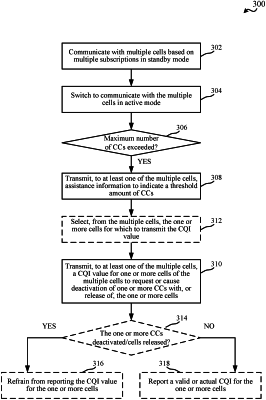| CPC H04L 5/001 (2013.01) [H04W 76/15 (2018.02); H04W 76/30 (2018.02)] | 30 Claims |

|
1. An apparatus for wireless communication, comprising:
a transceiver;
a memory configured to store instructions; and
one or more processors communicatively coupled with the memory and the transceiver, wherein the one or more processors are configured to:
communicate with multiple cells based on two separate subscriptions stored at the apparatus in a dual subscription dual standby (DSDS) mode;
switch to communicate with the multiple cells in a dual subscription dual active (DSDA) mode;
transmit, to at least one of the multiple cells and based on a number of component carriers allowed for a subscription being exceeded by switching to communicate in the DSDA mode, assistance information to indicate a threshold amount of component carriers for the apparatus; and
transmit, to at least one of the multiple cells and based on the number of component carriers allowed for the subscription being exceeded by switching to communicate in the DSDA mode, a channel quality indicator (CQI) value for one or more cells of the multiple cells to request deactivation of one or more component carriers with, or release of, the one or more cells.
|